Broadway Star May Irwin Summer Home Built Upon Club Island Near Clayton
Born in 1862 in Whitby, Canada, less than 30 miles from downtown Toronto, broadway star May Irwin made her first stage appearance in Buffalo, N.Y., at Daniel Shelby’s Adelphi Variety Theater in 1875. There, she sang a duet with her sister Florence and the act proved so successful that the duo soon billed themselves as the “Irwin Sisters.”

Two years later, while performing at a Detroit theater variety show, the sisters were spotted by Tony Pastor, who brought them to his theater in New York City, where they engaged in the sketch “A Rural Stroll,” which ran four years. May was soon on her way to bonafide stardom, engaging in many theater productions until May set out on her own once she turned 21 years old.
May Irwin married at the young age of 16 to Frederick W. Keller in 1878 and went on to make appearances in London and became a well-known improvisational comedienne who was in demand and earning $2,500 a week, nearly $75,000 in 2023 inflated currency. While everything was going well, tragedy struck in 1886 when Frederick died unexpectedly.

Though she married two more times, once again in the early 1890s and the final time to Kurt Eisfeldt, her manager, in 1907 until the end of her life in 1938, May Irwin only had two children, Walter and Harry Keller, from her first marriage. Family was very important to her and extended to her servants and their families. In an interview for Theater Magazine, published in Vol. 5 in 1905, May Irwin talked of the number ’33’ and its importance–
There is not a woman in the United States who has had a harder time in life than I, and it makes a woman serious to remember, for instance, that there are thirty-three persons who look to her as that number do to me. The thiry-three are relatives or servants whom it is my duty and my pleasure to help. My mother, for instance, whom I support, my brothers, who have families, and there is Sarah.
It was Sarah who brought you upstairs. She has been with me seventeen years. She has four children, three daughters and Bobbie. Do you remember that I had out an eight-sheet poster a few years ago—a cunning little pickaninny that I held in my arms? Sarah’s Bobbie is the original of that poster. If anything happened to Sarah, of course I would look after them. Yes, I may be said to be head of the family of thirty-three, white and black.

In June of 1898, “Captain May Irwin” brought her yacht “The Countess” to the Thousand Islands by way of the Eerie Canal, making an appearance in Utica. The Utica Observer reported–
Capt. May Irwin, of the naphtha launch The Countess, passed through Utica yesterday afternoon en route, via the Erie, to her summer home, Club Island, in the St. Lawrence, opposite Clayton. Capt. May, attired in correct nautical costume of navy and white cap, gold-lettered with the name of her craft, looked only half as buxom and motherly as she does when she occupies the center of the state and bubbles forth one of these coon songs which are the delight of her audiences and the envy of her associates.
May Irwin and crew had started in New Jersey and then worked their way up the Hudson where, just below Albany, The Countess was nearly in a collision with the big boat “Adirondack,” which ran down a smaller boat in the lower Hudson just prior, resulting in the drowning of two men. Miss Irwin was still too distraught to discuss the near miss as her crew, consisting of her two sons, Harry and Walter, an engineer, a cook, and a pilot, left Utica that afternoon on their way to Rome. They planned to spend the night there, then onward to Syracuse and Oswego via the Oswego Canal before reaching the St. Lawrence River and her summer home on Club Island.
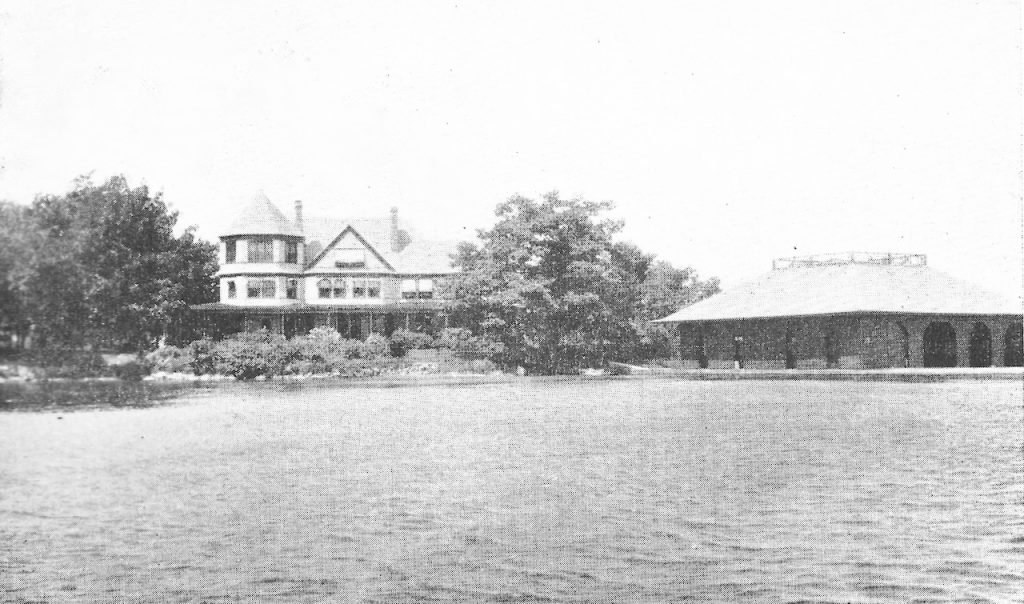
During the summer of 1891, May Irwin made good on a promise to have a place in the Thousand Islands someday. During her years with Tony Pastor’s troupe, she first saw the Thousand Islands in 1880 from a boat going from Ogdensburg to Kingston, Ontario, and said that she would have a home there one day. The Watertown Daily Times reported the backstory in an article celebrating her 70th birthday in 1932–
In 1891, when Flo was seriously ill she took her to the Islands and it was then that she purchased Club Island about three miles from Clayton off the head of Grindstone. More than ten years later she began the erection of three story red-granite castle, and in it was married, before it was completed, to Mr. Eisfeldt.
In 1896, May Irwin starred in the silver screen’s first kiss. “The Kiss,” as it was known, was a short 23-second film shot by none other than the motion picture inventor, among 1,092 other things, Thomas Edison.

The May Irwin summer home, built upon 8 acres and completed in 1908, consisted of 8 master bedrooms, 3 baths, a billiard room, large ice house, 50′ x 50′ boathouse, a 100′ bowling alley, a sandy beachfront and servants’ quarters with views toward Clayton and the Manatauk Hotel across the St. Lawrence River at Bartlett’s Point.
The same year constructed started on her summer home, May Irwin performed in Watertown for the first time at the City Opera House. The Times reported, in part, of her May 23rd performance–
The audience that filled the City Opera House last night, the occasion of May Irwin’s first appearance in Watertown, demonstrated that local theater goers appreciated a good thing and will literally patronize the host attractions. Every seat in the house was filled, and every available space was occupied by chairs.
The old belief that “The play’s the thing” does not hold good as to May Irwin’s production, for the play, a three-act farce, entitled “Sister Mary,” by Glen McDonough, was merely a background for Miss Irwin.
Miss Irwin renewed the pleasure of old admirers last night and made many new ones, and her return to Watertown will be a warning to opera house management to get out its S. R. O. sign and have it in readiness for another evening’s hard service.

May Irwin performed numerous times at the City Opera House afterward, not to mention the Clayton Opera House, and may have taken in a Red & Black football game or two as well. She was reportedly amongst the 3,000 at Madison Square Garden in 1903 when the Red & Black played in the World Series of Football Championship, losing to Franklin from just outside Philadelphia, PA., 12-0.
Shortly after May Irwin’s marriage in 1907, she put the island home up for sale or lease as shown in the House and Garden advertisement that same year. She retained it for some years afterward, setting out to have its name changed from Club Island to Irwin Island in 1908. In addition to Club Island, May Irwin had several houses in New York City, purchasing 638 Lexington Avenue in 1910 as a direct result of her latest hit, the farce “Getting a Polish.”

Miss Irwin had already owned the adjacent apartment house at 636 Lexington Ave for some time. “The Swell Mrs. Fitzswell” earned her Sixth Avenue and 96th Street property. She also owned homes on West End Avenue and another on West 40th Street, one in New Rochelle, and a winter home on Merritt Island in Florida, all a result of her showbiz and management success.
At some point, she finally parted ways with her summer home on Irwin/Club Island and started on a mainland farm just below Clayton, where, in later years, she stayed from spring until fall. The Times noted of her property, “from her house she has a beautiful view of the great scenic region of the Thousand Islands, and she enjoys it all, taking great pride in her cows, her chickens, her dogs, and her cats.”

Upon her death in October 1938, at the age of 76, The Times remarked—
Miss Irwin was a good business woman. All during her long professional career she saved carefully and invested her earnings intelligently. Always after her rise to fame she was among the highest salaried members of her profession. In 1924, producers in New York offered her $3,000 a week for an appearance in a special vaudeville program during the season.
In addition to her long theatrical career, May Irwin covered the 1916 Republican National Convention for the Watertown Daily Times and occasionally wrote special articles for it and other newspapers, including the New York Journal.

The Times article continued with—
But May Irwin’s great interest during almost all of her lifetime and particularly during the last years of her life was the St. Lawrence and her home here. She always said she had seen all of the great rivers of the world and none of them compared to the Thousand Island district.
She and Mr. Eisfeldt took a keen interest in Clayton. For several years up until 1932 they held a barn dance on the farm for the benefit of the Clayton Golf Club. This was a costume affair with a fiddler’s contest and attracted several hundred people annually. They entertained frequently during the summer months.





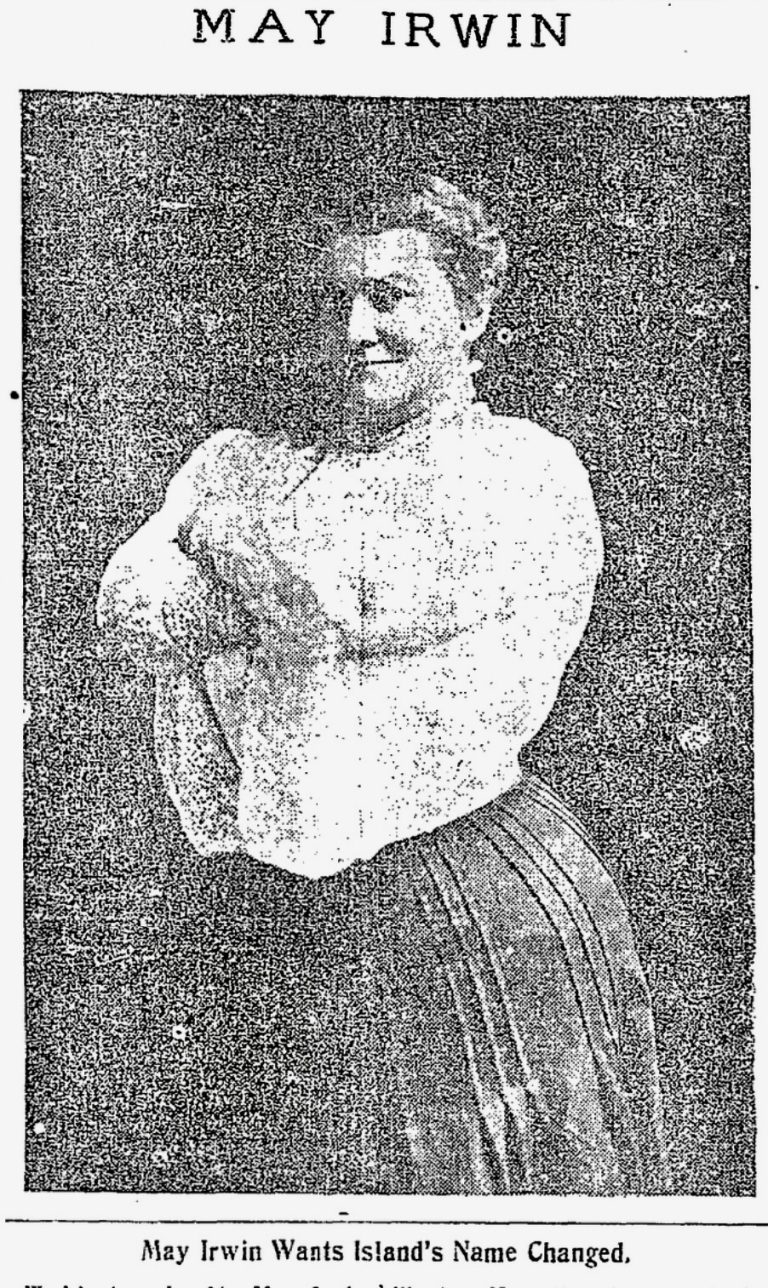
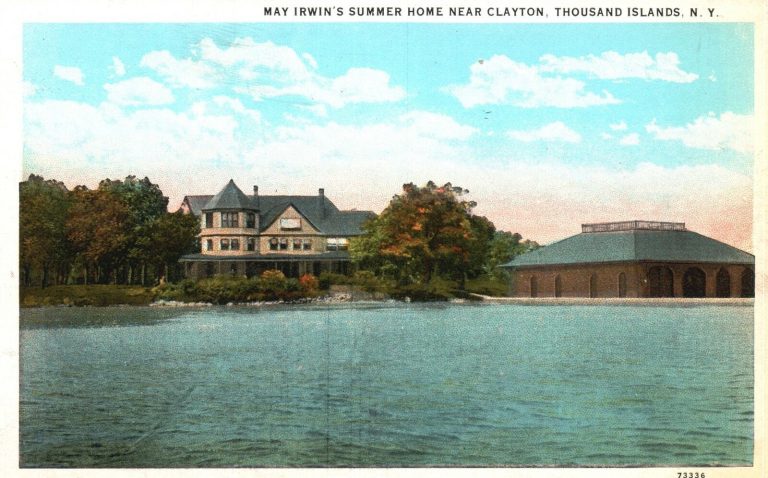

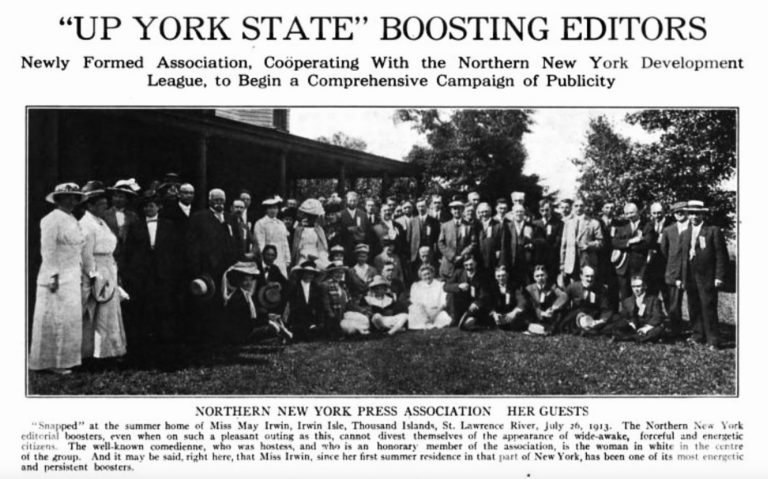



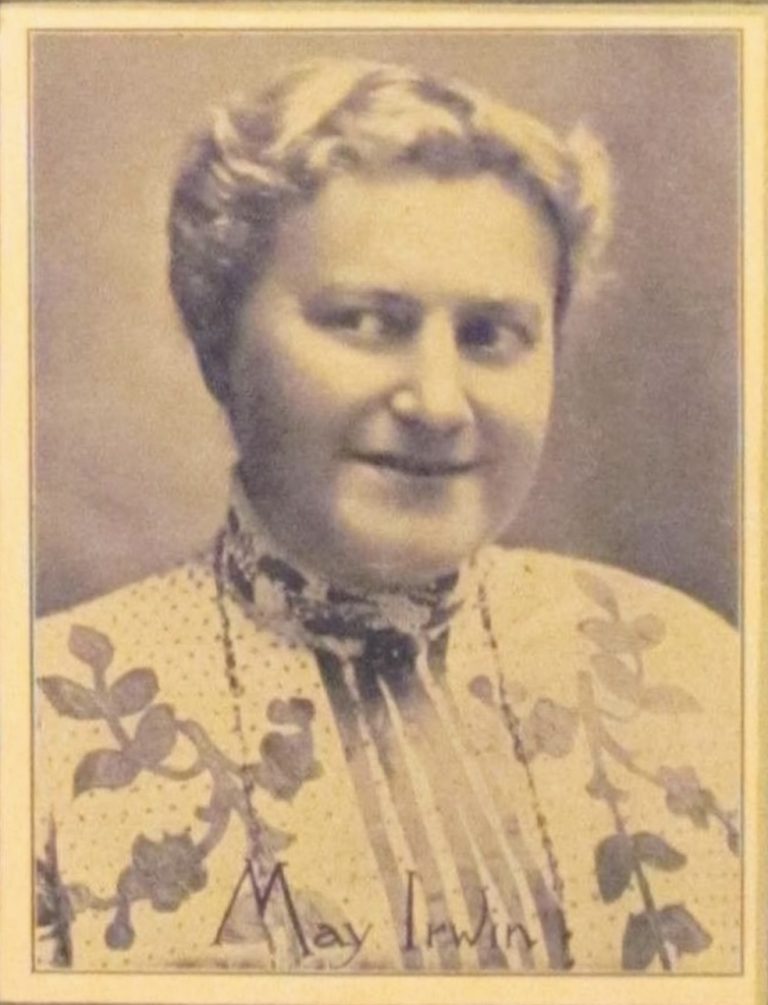

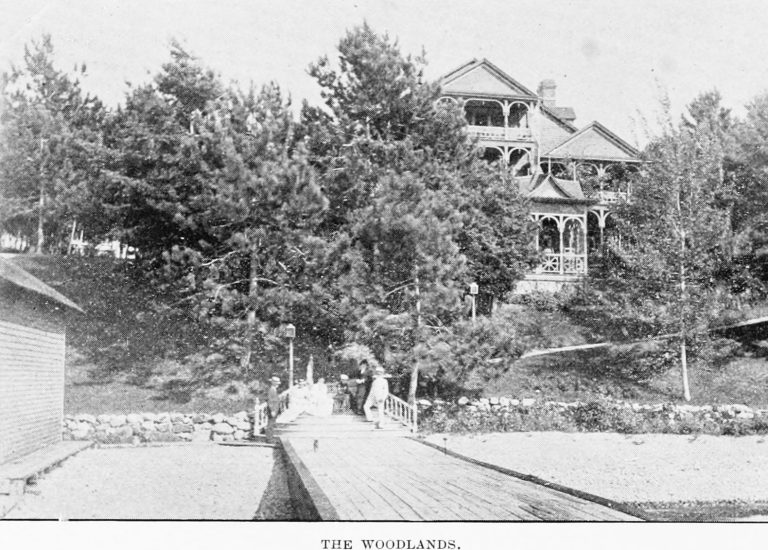





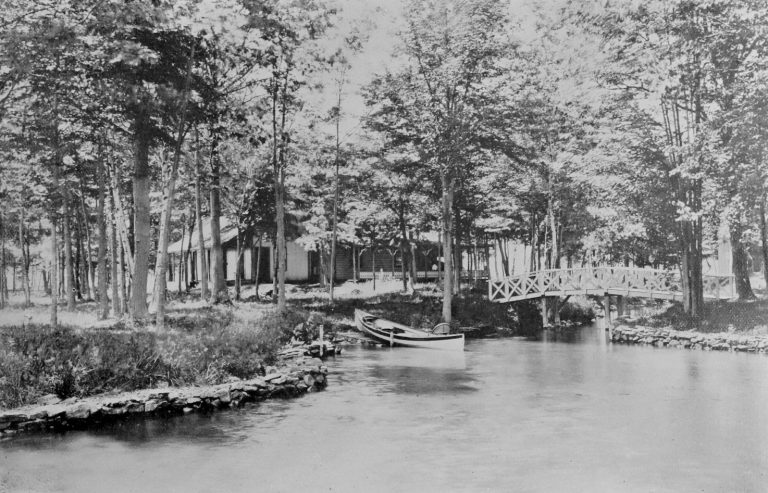

1 Reviews on “Broadway Star May Irwin And Her Summer Home – 1000 Islands”
I enjoy your articles. What happened to the house & property? Does it still exist today? If not when was it torn down?
Thanks,
Thank you! The mansion is long gone. I didn’t search much further beyond the 20s as she had sold it by then and there was very little info to be found on it at all. A reader commented that they recalled there were no signs of it by the 1960s, so something happened to it between the 30s and 60s. I’ll have to check and see if I can find any further info on it when I get a chance.